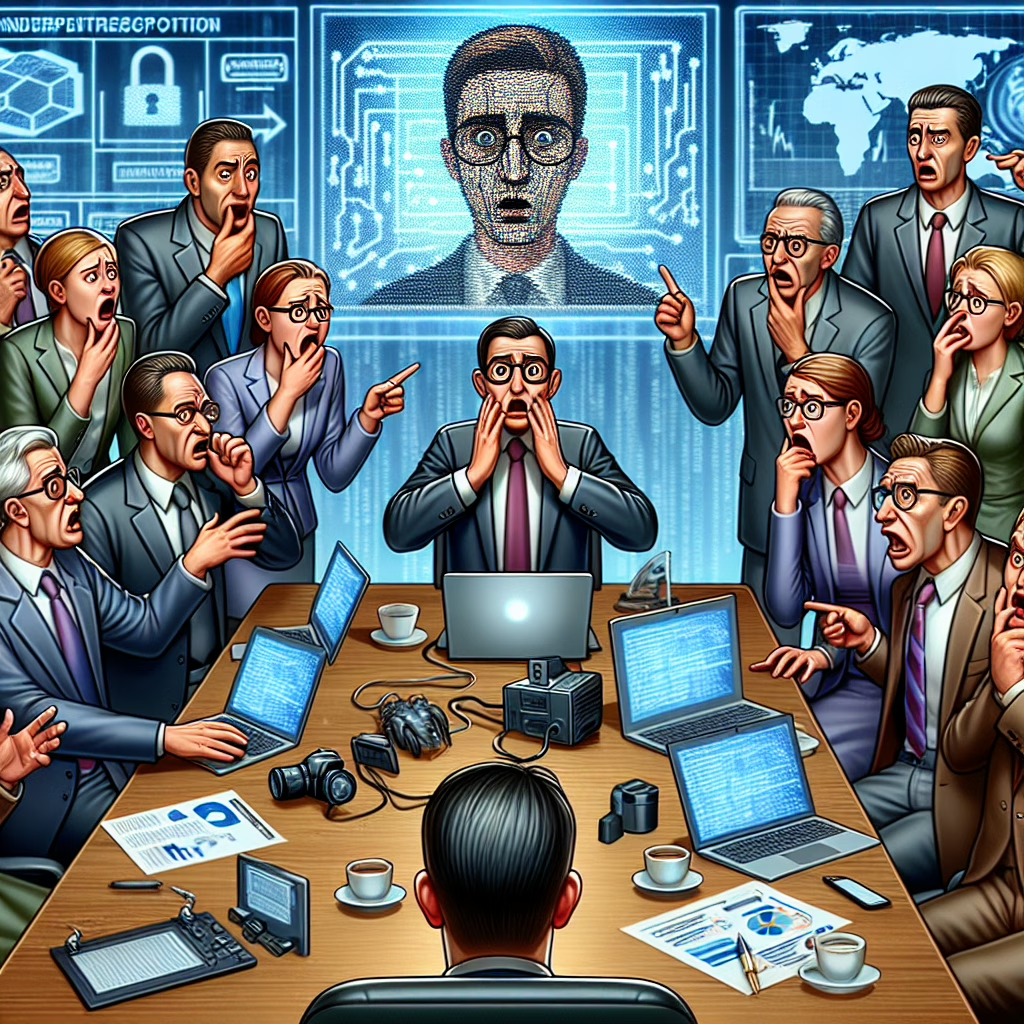In the ever-evolving landscape of cybersecurity, a new player has emerged on the scene: deepfake sentinels. These digital tricksters are not just here for a laugh—they’re serious business. As cybercriminals grow bolder, they’re deploying these sophisticated tools to test the detection systems of businesses, making it essential for organizations to stay one step ahead. Let’s dive into this intriguing world where technology meets tomfoolery!
What Are Deepfake Sentinels?
To put it simply, deepfake sentinels are AI-generated impersonations designed to mimic real people or events convincingly. Think of them as the digital equivalent of a shape-shifting chameleon, but instead of blending into nature, they’re blending into your company’s security protocols. Cybercriminals use these deepfakes to probe vulnerabilities in detection systems, leaving businesses wondering if their defenses are up to snuff.
Why Are They a Big Deal?
Here’s the kicker: deepfake technology has become increasingly accessible. With just a little know-how and some coding magic, anyone can create a convincing fake persona. This democratization of deepfakes means that even small-time mischief-makers can challenge corporate giants. As we saunter through 2025, organizations must recognize that these aren’t just harmless pranks—these deepfake sentinels pose a serious threat to sensitive data and brand integrity.
The Impact on Businesses
So, what does this mean for the average business? Well, it’s time to sharpen those cybersecurity tools! As companies deploy their own defenses against these deepfakes, they need to ensure they have robust detection systems in place. Regular audits and updates will keep systems fresh and ready to tackle the latest technological shenanigans.
Moreover, training employees on recognizing potential deepfake threats can be invaluable. After all, an educated workforce is like having an army of digital detectives on your side. Encourage staff to question suspicious communications or video calls—because who knows when you might be chatting with a pixelated imposter?
How Can Businesses Prepare?
The key is proactive preparation! Here are some actionable steps businesses can take:
- Invest in Advanced Detection Tools: Not all detection software is created equal! Look for solutions specifically designed to combat deepfake sentinels. These tools employ machine learning algorithms that can spot anomalies in videos and audio clips.
- Educate Your Team: Conduct training sessions that focus on identifying deepfakes and phishing attempts. A well-informed employee base is your first line of defense.
- Implement Multi-Factor Authentication (MFA): Even if someone impersonates your CEO through a deepfake video, MFA can help ensure that unauthorized access remains at bay.
- Cultivate a Culture of Skepticism: Encourage employees to double-check information before acting on it. A healthy dose of skepticism can go a long way!
The Future is Now!
As we continue through 2025, the integration of advanced AI technologies like deepfake sentinels will likely increase. Businesses must adapt or risk becoming prey in this high-stakes game of cat and mouse. The good news? There’s no shortage of innovative solutions out there to help mitigate these risks.
If there’s one thing we’ve learned from this tech-driven era, it’s that staying informed is crucial. Embrace knowledge about deepfake sentinels, educate your teams, and invest in cutting-edge security measures. Together, we can turn the tables on cybercriminals and keep our digital worlds secure!
In conclusion, while deepfake sentinels may sound like something straight out of a sci-fi movie, they’re very much real and present a unique challenge for businesses today. So let’s stay vigilant and proactive—after all, laughter may be the best medicine, but when it comes to cybersecurity, prevention is key!
What are your thoughts on this emerging trend? We’d love to hear your insights and experiences in the comments below!
Thank you to TechRadar for their enlightening article that inspired this piece.

